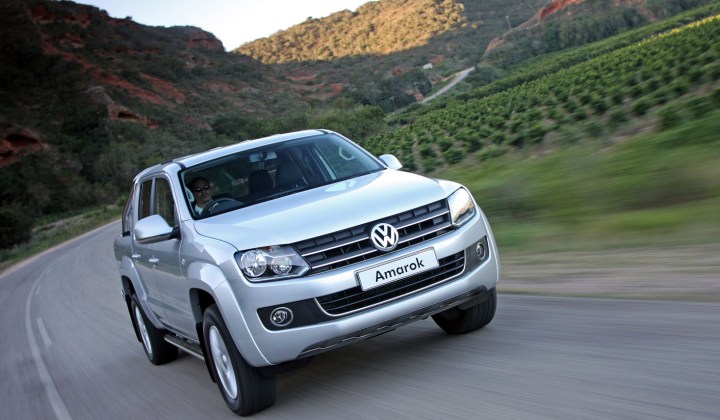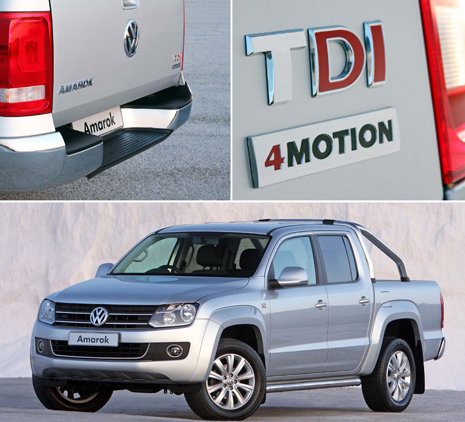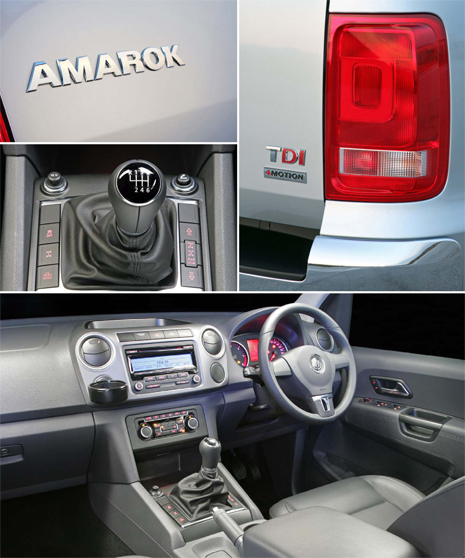Maverick Life
VW Amarok 2.0 BiTDI Highline 4×2: Is this the thinking man’s bakkie?

Some would say Volkswagen turned the South African bakkie market upside down when it launched the Amarok. Others scoff at the notion of a utility vehicle that tries to offer a car-like cabin with comfort levels to match while still delivering on its workhorse promise. DEON SCHOEMAN drives the latest, more powerful Amarok to separate the wheat from the chaff.
Bakkies are as much a part of the South African way of life as our (mostly) sunny skies, our wide open spaces and a lifestyle that tends to place a particular emphasis on the great outdoors. Indeed, what started out as a humble utility vehicle has become embedded in the SA motoring psyche.
Why? Because bakkies epitomise robust practicality, rugged reliability and an ability to cope with the kind of terrain just not suited to normal road machines. To drive a bakkie is to be free of conventional motoring constraints.
But let’s not forget that a bakkie is, first and foremost, a working machine – a utility vehicle designed to carry substantial loads, often over compromised terrain. In that context, aspects such as interior accommodation, standard features and comfort levels don’t enjoy priority.
It’s also true, however, that the bakkie has evolved from its workhorse roots to include specific models with a leisure application. The ubiquitous double cab pick-up is the most obvious, and most popular, iteration of this sub-category. Many South Africans consider a double cab their family vehicle of choice.
It is this merging of utility and passenger car roles that has brought a brand like Volkswagen to the bakkie table. With a reputation for producing people’s cars, VW must have realised that it could not afford to miss out on competing for a slice of the bakkie pie.
The result is the Amarok, a stout and solid pick-up offered in both single-cab and double-cab configurations and a choice of turbo petrol or turbo diesel engines, together with either 4×2 or 4×4 drivetrains.

The Amarok has been around for almost two years now, met with unbridled enthusiasm from some quarters and a measure of suspicion from others. However, even its critics will agree that the interior treatment is classy and car-like, with a level of tactile quality that’s simply a cut above.
The reason for this, my second acquaintance of the Amarok, is the arrival of a new and more powerful, bi-turbo diesel engine at the top end of the Amarok model range. As before, the power unit is a 2.0-litre four-cylinder, equipped with direct injection and a twin-stage turbocharger.
However, power has been upped by a full 10% – or 12 kW – and now maxes out as 132 kW. The already prodigious torque peak of 400 Nm has remained unchanged, as has the six-speed manual gearbox. You still get to choose between 4×2 and 4×4 versions, though, and as this is the flagship model, the top Highline spec level is standard.
While 4Motion all-wheel drive with a low-range transfer case is an option, this test vehicle was the more popular 4×2 version, which offers a differential lock to augment its off-road prowess, but does without the more expensive (and more complicated) all-wheel drive system.
This not only benefits fuel consumption, but also recognises that most owners are unlikely to need more than the ride height, the rugged construction and the diff lock’s added traction, even when heading off the beaten track.
The double cab silhouette doesn’t allow for much in the way of design scope, but the Amarok at least manages to express the VW styling ethos with conviction. The large headlights, prominent grille and supersized VW badge ensure that the Amarok could never be mistaken for anything else.
In pure dimension terms, this is an imposing double cab, with the kind of wide and tall stance that would make the Americans proud. The chunky proportions add further visual muscle and there’s a certain purposefulness about the VW’s presence that is both impressive and eye-catching.
VW is quick to point out that the load bed is wide enough to fit a 1.2 x 1.8m Euro pallet between the wheel arches, and that it offers a load area of just more than 2.5 square metres. Further proof of its utility talents is its maximum payload of 1.2 tons.
A neat touch is the illumination of the load bay, provided by a light integrated into the third brake light cluster on the roll-over bar.

The cabin is certainly one of the Amarok’s highlights, at least as far as tangible quality, ergonomics and comfort are concerned. The finishes are classy but understated, with that Teutonic attention to detail that’s turned Golfs and Polos into best-sellers.
There’s loads of room (as one would expect of a big double cab) for both front and rear occupants, and the cloth upholstery looks smart enough, while also promising durability.
The controls and switchgear will be instantly familiar to owners of current-generation VW passenger cars: clearly legible analogue dials and intuitive controls for all the main systems and features. If anything, it’s all a little stark and monochromatic.
The list of standard kit is comprehensive, but not exactly full house. You do get climate control, electric windows and mirrors, remote central locking and cruise control. But despite the six-speaker sound system there’s no provision for USB-based music playback, iPod compatibility, or Bluetooth – all systems currently standard on even entry-level passenger cars. Perhaps VW believes that bakkie owners aren’t sophisticated enough for such paraphernalia.
The 2.0-litre BiTDI engine has always felt strong, and this even more muscular version gets going with the kind of urge that threatens to spin tyres and strip gearboxes. The clutch is beefy, but has a trigger-fine action that requires some adept clutch work. In fact, it’s often kinder on the drivetrain to pull off in second gear.
With the majority of the engine’s torque already on offer from just 1,500 rpm, there’s little need to rev the engine – short-shifting is the order of the day, while making the most of the four-potter’s prodigious midrange shove.
Needless to say, cruising at the legal limit is a cinch, and even overtaking in top gear is usually the norm.
I do feel that an auto gearbox would be a more refined choice here, and may well be better suited to the engine’s character, so the lack of an auto option, especially in the leisure vehicle context, is a little puzzling. It may be that the manual gearbox comes into its own when the Amarok is heavily loaded or towing a heavy trailer. In those situations, the turbo engine’s more abrupt delivery of torque is probably better controlled via manual gear shifts.
The Amarok always feels rapid, and for a double cab, its 10.3 second sprint time from zero to 100 km/h is rapid enough, as is the 184 km/h top speed. VW’s fuel consumption figure for the combined cycle is a frugal 7.9 litres/100 km, although as always, our real-world experience was around the 9-litre mark.
So, is the Amarok convincing enough to wean SA bakkie buyers from their more traditional Toyota Hiluxes, Isuzu KBs or Ford Rangers? Sales figures suggest the VW still has some way to go – but then, it also has a smaller model range than the Hilux, for instance.
More specifically, however, much of the market’s circumspection about the Amarok seems to stem from the fact that it only has a 2.0-litre engine, albeit a muscular one, while its rivals offer substantially larger engine capacities.
It’s the kind of bigger-is-better argument that you’ll hear around camp fires, but that might not always have relevance in practice. Certainly, the Amarok, with its extra muscle, feels beefy enough to tackle the loads and conditions double cabs are subjected to.
It’s also efficient, spacious, comfortable and dynamically confident. Whether it’s a sufficiently competent towing vehicle, especially of heavy loads in difficult terrain, is more of a moot point, and one that I can’t answer.
But one thing’s for sure: in the broader leisure vehicle role, and in 4×2 guise, the VW Amarok makes a lot of sense. DM
VITAL STATISTICS
|
Volkswagen Amarok 2.0 BiTDI 4×2 Highline
|

















 Become an Insider
Become an Insider